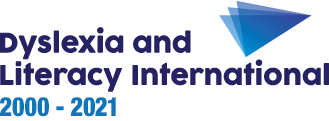Technology aids (by Judith Stansfield)
Technology is an invaluable aid for children with reading and writing problems. In fact these children often have great skill in using these technologies.
In particular, computers can reinforce structured multisensory learning. They allow ‘overlearning’ and constant revision. They allow the pupil to work on their own at their own pace without the stress of keeping up with others. They often instruct in the guise of a game.
Above all they do not judge.
Software can supplement what is taught. It can sometimes be used in class but is particularly useful at home.
Here are the advantages of a multimedia computer:
- – Internet access
- – voice recognition
- – spelling and grammar help
- – text enlargement, font and colour change
Optional additions are:
- colour printer
- digital camera
- scanner
- good quality microphone
- headphones
- mouse with a ball (especially for those with weak muscular coordination)
- large keyboard
Other aids that can significantly help children with dyslexia are:
- electronic personal organizer to organize the timetable, with reminders
- reading pen
- portable spelling correctors
- recording system (minidisk, MP4)
Appropriate software:
- to improve less strong cognitive processes
- voice processing
- word banks
- word prediction
- screen readers
- typing practice
- passage writing and structuring (mind mapping)
- help with numbers
- different ways of encoding diagrams
These suggestions show how much help a computer can give in composition of texts, corrections, and allowing the reading of the text and re-reading aloud. They may completely liberate the child with dyslexia.
Some word processors include onscreen banks of words or phrases. The writer can hear the suggestions for words before choosing them. Predictive text is more useful than spelling correction because the pupil can start recognizing words which are difficult to spell.
Skills can be developed with the aid of attractive ‘games’. Some software is available freely on the Internet; others have to be bought.


